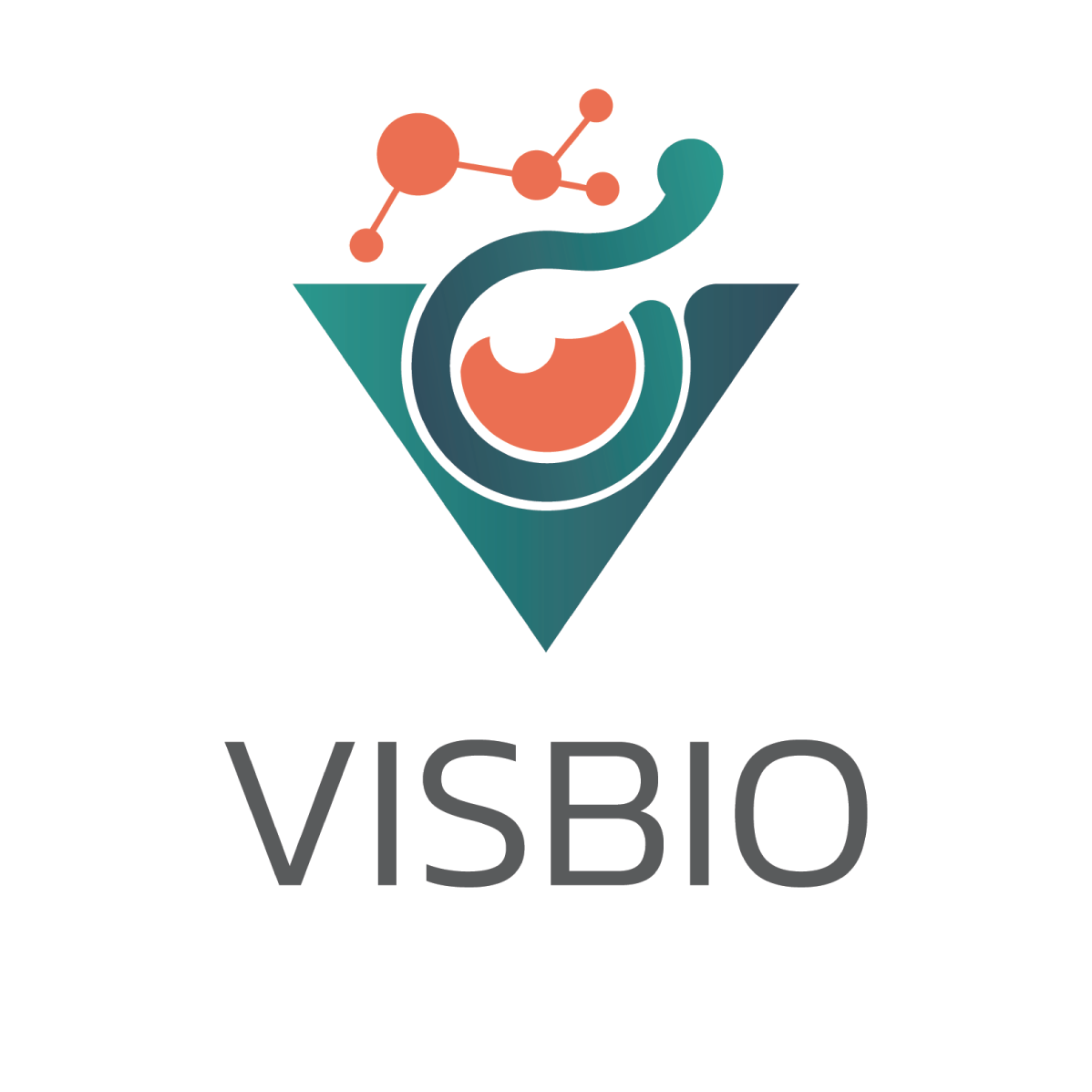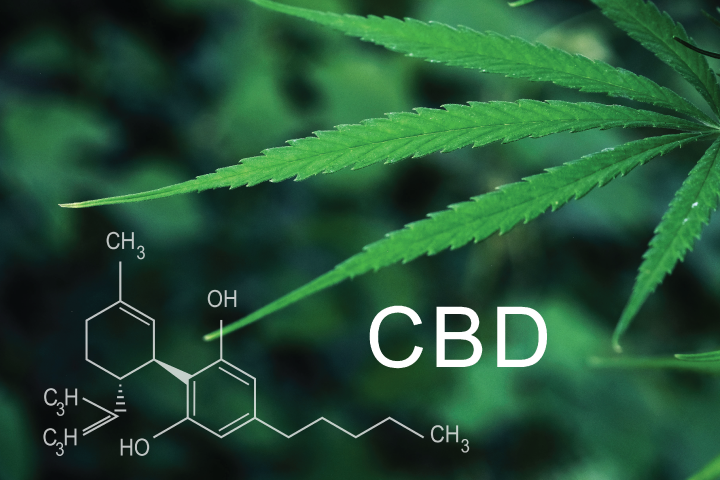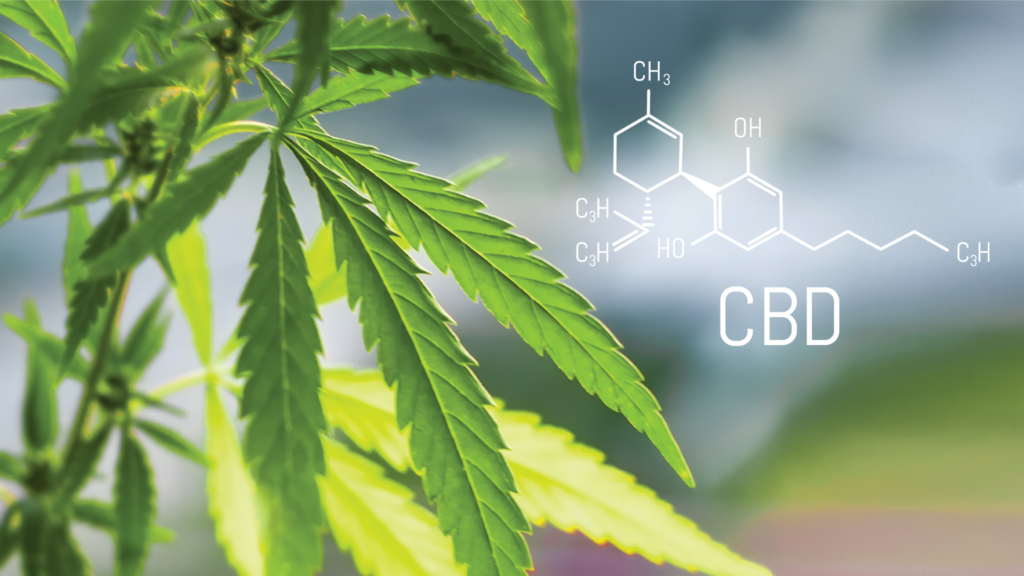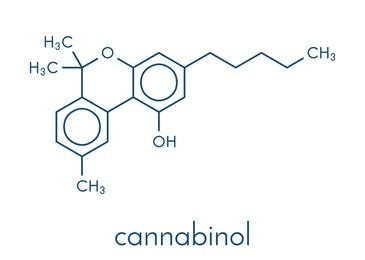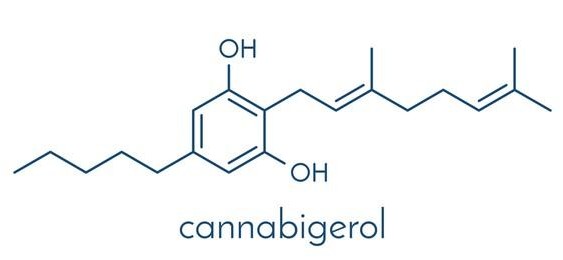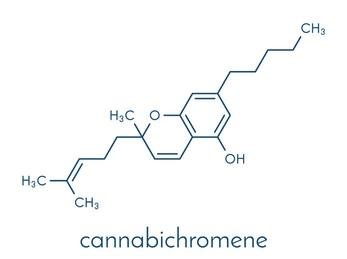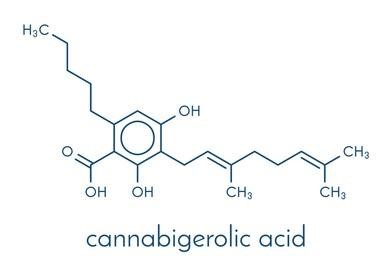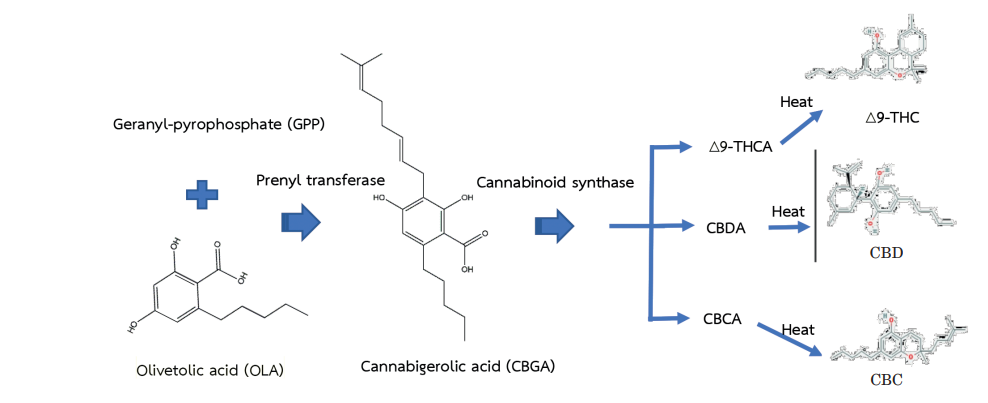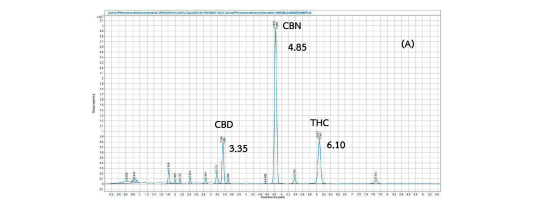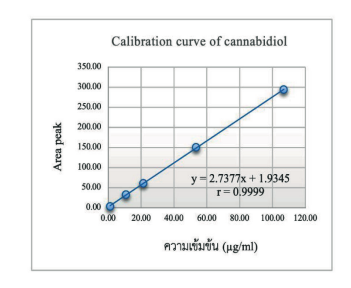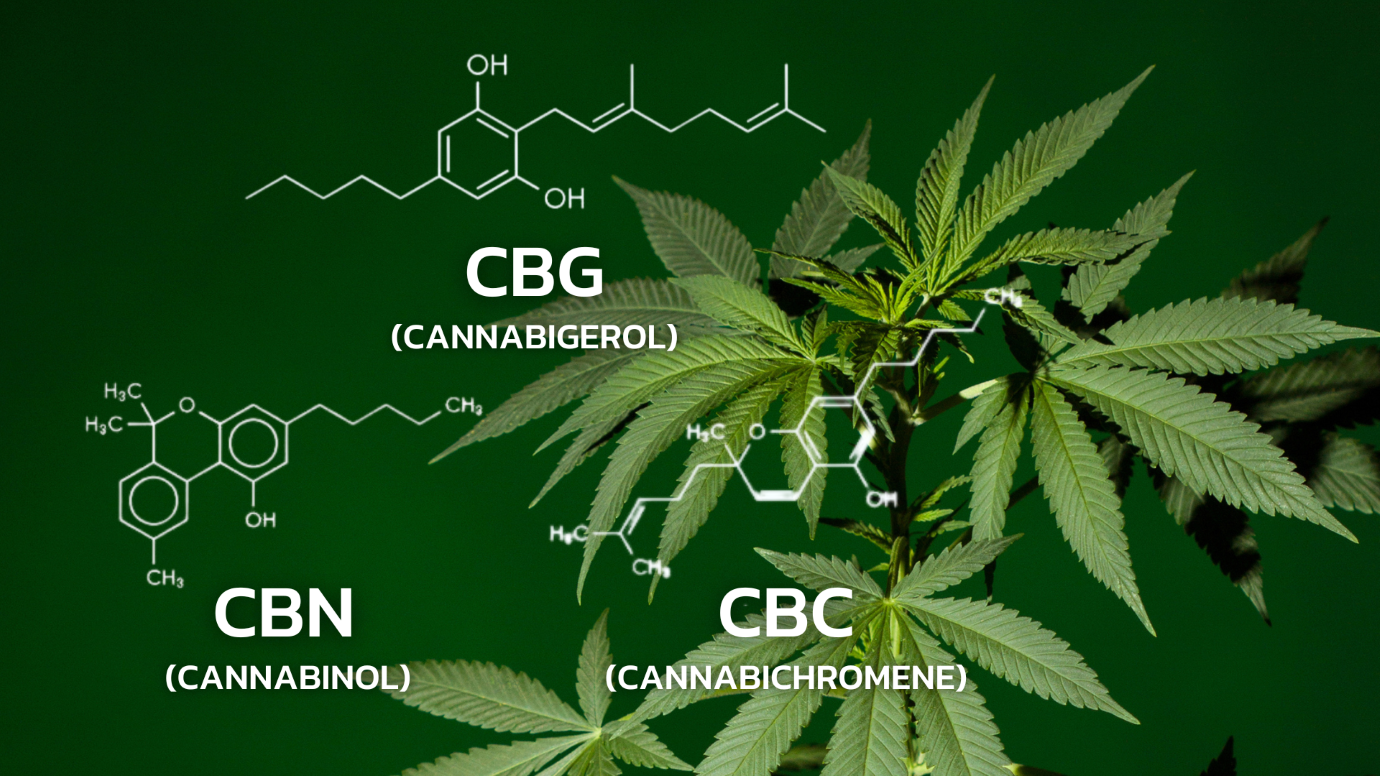
Information on Cannabis Biomarker Testing Services, such as CBN, CBG, CBC or CBGA Using HPLC
VISBIO Co., Ltd. offers testing and analysis services for the quantification of biomarkers, including CBN, CBG, CBC or CBGA, in all products within the health and beauty industry. Cannabinoids are essential compounds found in cannabis, with various types. For example, CBN (Cannabinol) has psychoactive effects, relaxes the nervous system, aids in sleep, reduces pain, and has anti-inflammatory properties. On the other hand, CBG (Cannabigerol) is non-psychoactive, promotes relaxation, enhances sleep and increases appetite. CBC (Cannabichromene) does not affect the nervous system, anti-inflammation, fungal infections, and alleviates pain and CBGA (Cannabigerolic acid). The controlling its standard is essential when using cannabis extracts in products. The quantity of active compounds should be consistent, with no excessive THC content and no impurities. Quality and quantity control of cannabis extracts must ensure safety and effectiveness for various applications.
Introduction to Cannabis
Cannabis, scientifically known as Cannabis sativa L. subsp. indica (Lam.), has been used as a medicinal remedy in ancient pharmacopeias for thousands of years. Its documented usage dates back to the 8th century in ancient Arabic pharmacopeias and is also found in traditional Chinese, Thai and British pharmacopeias. Cannabis is a robust plant that thrives in warm climates, reaching approximately 2-4 feet in height, with leaves that are palmate, resembling either hemp or marijuana leaves. A single leaf typically contains about 5-7 palmate lobes on a single stem.
Cannabis is permitted for medicinal and recreational use in many countries. It consists of numerous active chemical compounds, with cannabinoids being a major group, primarily found in the female flower’s trichomes. They are usually in the form of carboxylic acid or acid form, but when exposed to light and heat, they decarboxylate into their neutral form. The prominent cannabinoids with pharmacological effects are THC (Delta-9-Tetrahydrocannabinol) and CBD (Cannabidiol).
However, cannabis comprises various cannabinoids and other compounds like flavonoids, steroids, terpenes, fatty acids, and more, and some of them are present in trace amounts, accurately analyzing and quantifying these substances is not a straightforward task. Due to the limitations of current analytical standards, various techniques have been developed for qualitative and quantitative analysis of these substances. High-Performance Liquid Chromatography (HPLC) is one of the preferred methods for the qualitative and quantitative analysis of different compounds in cannabis, allowing for the quality control of extracts or herbs.
Cannabis extracts
Cannabis extracts are commonly derived from the female flowers of cannabis plants, which have high concentrations of chemical compounds. The major components are typically cannabinoids, including THC (Delta-9-Tetrahydrocannabinol) and CBD (Cannabidiol). These two substances are fat-soluble and are often extracted using oils.
Each cannabis plant strain has varying levels of THC and CBD in different proportions. These levels depend on environmental conditions and cultivation techniques, leading to variations in the extracted from different sources. Cannabis extracts come in various forms today, such as oils, resin and have been developed into various products, including cosmetics, food, bakery, beverages, dietary supplements or prescription medications.
What is CBN (Cannabinol)?
CBN (Cannabinol) is a molecule with the molecular formula C21H26O2, and it belongs to the group of cannabinoids found in cannabis. CBN is a white powder with properties that make it distinct. It is derived from Cannabigerolic acid (CBGA) and is formed when THCA (Tetrahydrocannabinolic acid) is exposed to heat or oxygen. Under such conditions, it breaks down its carboxylic group and transforms into THC (Delta-9-Tetrahydrocannabinol) and CBN (Cannabinol).
CBN has psychoactive effects, relaxes the nervous system, aids in sleep, reduces pain and also possesses anti-inflammatory properties.
Figure 1 The structure of CBN
What is CBG (Cannabigerol)?
CBG (Cannabigerol) is a molecular formula of C21H32O2. CBG is derived from CBGA (Cannabigerolic acid) in its acidic form, which belongs to the carboxylic acid group. CBG is one of the significant cannabinoids because CBGA serves as the precursor molecule for all cannabinoids.
In most cases, CBG is most abundant during the early stages of flowering, and if left to mature fully, it will mostly convert into other types of cannabinoids. Currently, CBG has gained increased attention and research interest. Generally, CBG does not have psychoactive effects, and it is known to promote relaxation, aid in sleep, and increase appetite.
Figure 2 The Structure of CBG
What is CBC (Cannabichromene)?
CBC (Cannabichromene) has a molecular formula of C21H30O2 and is an important compound found in the Cannabinoids group naturally occurring in cannabis. When exposed to heat, CBCA (Cannabichromic acid) undergoes decarboxylation, converting it into CBC (Cannabichromene). CBC does not have psychoactive effects and is known for its anti-inflammatory, antifungal and pain-relieving properties.
Figure 3 The Structure of CBC
What is CBGA (Cannabigerolic acid)?
CBGA (Cannabigerolic acid) has a molecular formula of C22H32O4 and is an important compound in the Cannabinoids group found in cannabis. CBCA is formed through an Alkylation reaction between Geranyl phosphate (GPP) and Olivetolic acid (OLA), resulting in an acidic compound, CBGA (Cannabigerolic acid). CBGA then produces and accumulates other acidic compounds, including THCA (Tetrahydrocannabinolic acid), CBDA (Cannabidiolic acid) and CBCA (Cannabichromic acid). Afterward, THCA, CBDA, and CBCA, when heated, transform into THC (Delta-9-Tetrahydrocannabinol), CBD (Cannabidiol) and CBC (Cannabichromene), respectively, as shown in the synthesis of important Cannabinoids in cannabis. Therefore, it’s evident that CBGA is highly significant as it serves as the precursor for all major compounds in cannabis, such as THC, CBD, and various derivatives.
Figure 4 The structure of CBGA
Figure 5 Synthesis of important cannabinoids in cannabis
The use of cannabis extracts, such as CBN, CBG or CBC, in the dietary supplement industry
Currently, there is increasing research and development of dietary supplement products that utilize extracts from cannabis containing compounds such as CBN, CBG or CBC. Methods for extraction, purification, and quality control of these extracts from cannabis are being developed to ensure their safety and effectiveness for use in various products.
Due to the beneficial properties of CBN, CBG and CBC, they are commonly used in dietary supplements to alleviate various conditions. For instance, CBN is known to aid in sleep, reduce pain and anti-inflammation. CBG has relaxing properties, promotes sleep and increases appetite, while CBC is recognized for its anti-inflammatory, anti-fungal properties, and pain-relieving effects.
However, when using cannabis extracts in dietary supplements, it is crucial to maintain standards for both the cannabis used and the manufacturing process. This includes ensuring that there are no contaminants such as heavy metals, molds or pesticides present and controlling the proper usage of the supplements. Furthermore, obtaining certification from relevant authorities is essential.
Example of a report on the analysis results of a sample of cannabis using the HPLC technique
Figure 1
Figure 2
From Figure 1, it shows the chromatogram of 17 types of Phytocannabinoids. By integrating the area under the curve, the quantities of the 17 different substances are calculated, compared to the standard substances. An example of Figure 2 displays the quantity of THCA that has been calculated.
Literature:
- กองควบคุมวัตถุเสพติด สำนักงานคณะกรรมการอาหารและยา, ตุลาคม 2563.
- Brenneisen R. “Chemistry and analysis of Phytocannabinoids and Other Cannabis Constituents” in Marijuana and the Cannabinoids. Humana Press, New Jersey, pp. 17-49, 2007.
- Galettis, Peter & Williams, Michelle & Gordon, Rebecca & Martin, Jennifer. (2021). A Simple Isocratic HPLC Method for the Quantitation of 17 Cannabinoids. Australian Journal of Chemistry. 74. 10.1071/CH20380.
- Hanus LO, Meyer SM, Munoz E, Taglialatela-Scafati O, Appendino G. Phytocannabinoids : a unified critical inventory. Nat Prod Rep 2016; 33(12) : 1357-92.
- De Petrocellis L, Ligresti A, Moriello AS, Allarà M, Bisogno T, Petrosino S, Stott CG, Di Marzo V. Effects of cannabinoids and cannabinoid-enriched Cannabis extracts on TRP channels and endocannabinoid metabolic enzymes. Br J Pharmacol. 2011 Aug;163(7):1479-94. doi: 10.1111/j.1476-5381.2010.01166.x. PMID: 21175579; PMCID: PMC3165957.
- Nelson KM, Bisson J, Singh G, Graham JG, Chen SN, Friesen JB, Dahlin JL, Niemitz M, Walters MA, Pauli GF. The Essential Medicinal Chemistry of Cannabidiol (CBD). J Med Chem. 2020 Nov 12;63(21):12137-12155. doi: 10.1021/acs.jmedchem.0c00724. Epub 2020 Sep 10. PMID: 32804502; PMCID: PMC7666069.
- Arnold JC, Allsop DJ, Lintzeris N, McGregor IS. Pharmacological actions and associated therapeutic levels of phytocannabinoids: an Evidence Check review brokered by the Sax Institute for the NSW Ministry of Health, 2016.
- 10 คำถาม “กัญชง-กัญชา” เรื่องน่ารู้จาก “อภัยภูเบศร”, กรมสุขภาพจิต, 2564.โครงการสนับสนุนอุตสาหกรรมแปรรูปพืชกัญชง เพื่อตอบสนองเศรษฐกิจชีวภาพ (Bioeconomy) ปีงบประมาณ พ.ศ. 2564.
- บังอร ศรีพานิชกุลชัย, การใช้กัญชาเพื่อประโยชน์ทางการแพทย์, วารสารเภสัชศาสตร์อีสาน 2562; 15(4) : 1-26.
- ธนวัฒน์ ทองจีน และคณะ, การพัฒนาวิธีวิเคราะห์ปริมาณแคนนาบินอยด์ในใบกัญชาด้วยวิธี Ultra High Performance Liquid Chromatography, วารสารกรมวิทยาศาสตร์การแพทย์ 2564; 63 (3) : 505-523.
- ศรายุธ ระดาพงษ์, พราว ศุภจริยาวัตร และเมธิน ผดุงกิจ, ฤทธิ์ทางเภสัชวิทยาและพิษวิทยาของกัญชา, วารสารกรมวิทยาศาสตร์การแพทย์, 2564; 63 (1) : 219-232.
- บทความความรู้กัญชาทางการแพทย์ องค์การเภสัชกรรม.
